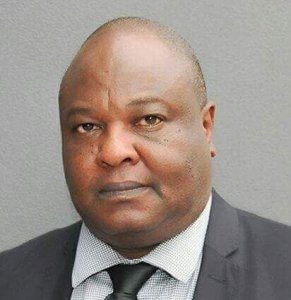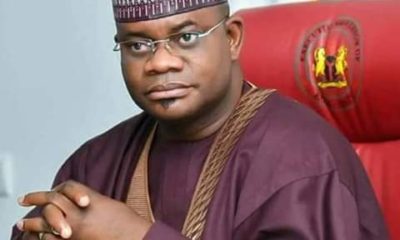Economic Issues
It’s About Time Nigeria Resolves Its Monetary Policy Conundrums -By Ayo Teriba


Ayo Teriba
1. Making Sense of Historical Monetary Policy Decisions
The Central Bank of Nigeria’s Monetary Policy Committee (MPC)’s decisions have included easing, just once in the last six years for the policy rate (MPR), and just twice in the last six years for the cash reserve ratio (CRR).
In contrast, the policy rate has been tightened ten times in the last six years, including twice during the recession in 2016, and the CRR has also been tightened ten times in the last six years, including once in 2016.
It is very puzzling that the MPC finds extraneous reasons, typically relating to concerns about banks or foreign exchange supply, to tighten monetary policy, even when the economy is contracting and can do with liquidity boost. We will demonstrate that MPC decisions have been disconnected from economic realities in the past six years, and urge that steps be taken to ensure a reconnect.
To make sense of the historical monetary policy decisions, we would now compare the patterns in policy decisions across the Chukwuma Soludo, Sanusi Lamido, and Godwin Emefiele regimes as governors of the Central Bank (CBN), and uncover significant and instructive differences across the regimes.
A. The Soludo Era
| MPR | CRR | ||||
| Unified | Private | Public sector | |||
| Jun-04 | Withdrawal of N74.5 bn (75.6 % ) | ||||
| 2005 | Jan-05 | Reduced MRR from 15% to 13% | 2-week maintenance period for CRR | ||
| June-05 | CRR increased from 9.5 to 10 % | Withdrawal of N60 billion public sector deposit | |||
| Nov 05 | Withdrawal of NNPC deposits, sale of N60 billion CBN instrument | ||||
| 2006 | June 06 | Raised the MRR from 13% to 14% | |||
| Nov-06 | Replaced MRR with MPR at 10% | ||||
| Nov-06 | Replaced MRR with MPR at 10% | ||||
| 2007 | Jun-07 | Reduced MPR from 10.0 % to 8.0 %) | |||
| Oct-07 | Raised MPR from 8.0 % to 9.0 %) | ||||
| Dec-07 | Raised MPR from 9.0 % to 9.5 %) | ||||
| 2008 | Apr-08 | Raised MRR from 9.5% to 10% | |||
| Jun-08 | Raised from 10% to 10.25 | ||||
| Sep-08 | Reduced from 10.25% to 9.75% | ||||
| 2009 | Apr-09 | Reduced from 9.75% to 8% | |||
Charles Chukwuma Soludo met the policy rate at 15 percent, raised it on five occasions and eased it on five occasions over his five-year tenure, to leave it at eight percent when he left the CBN. He met CRR at 9.5 percent, raised it to 10 percent the month he took over, but also withdrew N60 billion public sector deposits from the banks in the same month, and subsequently preferred the later approach to CRR, which he effectively abandoned, making more withdrawals in November of that year. He had cut CRR to one percent by the time he left. He also cut policy rate from 15 to eight percent, and CRR from 9.5 to one percent over his five-year term.
The strategy of withdrawing public sector deposits to mop up excess liquidity targeted the specific banks with excess liquidity problems, without putting any burden of increased CRR on banks that did not have the problem. Once the excess liquidity had been effectively mopped up, he was able to ease rates sustainably without any backlash, and market rates eased considerably for nearly one and a half years after he left, when his successor suddenly changed the strategy in the September 2010 MPC meeting.
B. The Lamido Sanusi Era
Sanusi Lamido Sanusi met the MPR at eight percent, eased it to six percent at his first MPC meeting in July 2009 – the only time he eased it, before raising it to 6.25 percent 14 months later in September 2019, and then raising it at each of the six meetings in 2011, finally to 12 percent by October, and holding it at that level until he left the CBN. He met the CRR at one percent, never eased it, but raised it on four occasions to 12 percent over an 18-month period from January 2011 to July 2012. Sanusi left the CRR at that level on private deposits, but raised it on public sector deposits to 50 percent in July 2013, and 75 percent in September 2013. He raised the CRR on private deposits to 15 percent in November 2013, leaving the one on public sector deposits at 75 percent.
Lamido raised the MPR from six percent to 12 percent, and raised the CRR from one percent to 15/75 percent in his time. He eased the MPR once and raised it seven times. He never eased the CRR, but raised it seven times.
| MPR | CRR | ||||
| Unified | Private | Public | |||
| Jul-09 | Reduced from 8% to 6% | ||||
| 2010 | Sep-10 | Raised from 6% to 6.25% | |||
| 2011 | Jan-11 | Raised from 6.25% to 6.5% | Raised from 1% to 2% | ||
| Mar-11 | Raised from 6.5% to 7.5% | Raised from 2% to 4% | |||
| May-11 | Raised from 7.5% to 8% | 4% | |||
| Jul-11 | Raised from 8% to 8.75% | 4% | |||
| Sep-11 | Raised from 8.75% to 9.25% | 4% | |||
| Oct-11 | Raised from 9.25% to 12% | 8% | |||
| 2012 | Jul-12 | 12% | |||
| 2013 | Jul-13 | 12% | 50% | ||
| Sep-13 | 12% | 75% | |||
| Nov-13 | 15% | 75% | |||
Lamido shied away from confronting the individual banks with excess liquidity problem, preferring to hike both policy rate and CRR to ridiculous levels until he left the CBN. Banks without excess liquidity were forced to swallow the same CRR pills that should have been prescribed only for those banks with excess liquidity. Soludo’s style of mopping up public deposits from banks with excess liquidity is indeed equivalent to a selective cash reserve requirement regime in which the hammer falls only on the banks that are likely to destabilise the system with excess liquidity. Some variants of that approach is needed to demolish the ostensible MPR and CRR burdens that Lamido had heaped on the Nigerian economy, which his successor is aggravating, and pave way for an orderly to a low MPR/CRR regime that is required to underpin a regime of low market interest rates and stronger liquidity support for real economic growth.
C. The Emefiele Era
Godwin Emefiele met the MPR at 12 percent when he took over in June 2014, raised it to 14 percent in November of that year, eased it to 11 percent a year later (the only time he eased it), before raising it to 12 percent in March 2016, and raising it further to 14 percent in July 2015. While he met a CRR regime of 12 percent on private deposits and 75 percent on public sector deposits, he raised the one on private sector deposits to 20 percent in November 2014, maintaining 75 percent on public sector deposits, until he unified the two at 31 percent in May 2015, cutting it to 25 percent in July 2015, and cutting it further to 20 percent in November 2015, before raising it again to 22.5 percent in March 2016. He has thus hiked policy rate thrice and eased it once, and hiked CRR thrice and eased it twice, to leave both levers tighter than he met them.
| MPR | CRR | ||||
| Unified | Private | Public Sector | |||
| 2014 | Nov-14 | Raised from 12% to 13% | 20% | 75% | |
| 2015 | May-15 | 31% | |||
| Jul-15 | 25% | ||||
| Sep-15 | 25% | ||||
| Nov-15 | Reduced from 13% to 11% | 20% | |||
| 2016 | Mar-16 | Raised from 11% to 12% | 22.50% | ||
| Jul-16 | Raised from 12 % to 14% | 22.50% | |||
Like Lamido, Emefiele has continued to shy away from confronting the individual banks with excess liquidity problem, preferring to hike both policy rate and CRR to ridiculous levels. Banks without excess liquidity are still being forced to swallow the same CRR pills that should be prescribed only for those with excess liquidity.
2. Tightening Monetary Policy Stance In a Recession Is Very Puzzling
While the CBN Act created the Monetary Policy Committee (MPC) with a dual mandate as follows: to ‘facilitate the attainment of the objective of price stability and to support the economic policy of the Federal Government’, the MPC tends to wrongly claim the first of the two mandates as its primary mandate.
There is a need for the MPC to pay more attention to the second mandate, especially now that the Federal Government is embarking on an urgent Economic Growth and Recovery Plan. To support economic growth and recovery, the MPC must ease its policy stance by cutting the monetary policy rate in an orderly manner to such a low level that will provide the much needed liquidity support for investment and sustained growth.
Money is different from credit. Monetary ease is different from the ease of credit. Monetary policy is first about money before it is about credit. Easy money will help economic recovery even if it does not translate to easy credit.
3. It Results From Conflicts From Laxity In Banking Supervision/Prudential Regulation
One of the reasons given by the MPC for not easing its monetary stance was that, ‘in the past, the MPC had cut rates to achieve the above objectives; but found that rather than deploy the available liquidity to provide credit to agriculture and manufacturing sectors, the rate cuts provided opportunities for lending to traders who deployed the same liquidity in putting pressure on the foreign exchange market which had limited supply, thus pushing up the exchange rate.’
This highlights tensions between monetary policy and micro/macro-prudential policies: the MPC is not easing policy because banks’ choices in response to policy easing may destabilise the economy.
This MPC statement also confirms lapses in micro/macro-prudential policies: there are no supervisory/regulatory arrangements in place to ensure that banks’ responses to policy easing will not destabilise the forex market. Nigeria thus faces a situation in which the MPC will be unable to fulfil the second part of its dual mandate as long as banking supervision/regulatory arrangements remain lax. Stronger supervisory regimes in the central bank in the past would promptly mop up excess liquidity in the specific banks that have it, either by issuing stabilisation securities or moving Federal Government deposits out of such banks into the central bank coffers, and then easing monetary policies for the sake of overall economic growth and stability. Banking supervision should not weaken to the point that the central bank gives excuses on behalf the same banks it is supposed to supervise.
4. Monetary and Micro/Macro-prudential Policies Must Be Realigned
The CBN Act of 2007 rightly created the Monetary Policy Committee (MPC) in Section 12 and the Financial Services Regulation Coordinating Committee (FSRCC) in Section 43 to address different aspects of macroeconomic policy concerns. While the MPC has actively and transparently engaged its monetary policy mandate through six meetings a year, the FSRCC has been dormant and opaque, with the consequence that its errors of omission in the micro/macro-prudential policy space have spilled over into the monetary policy space and are now creating tensions in the pursuit of the growth and recovery objectives of monetary policy.
Both committees are chaired by the Governor of the Central Bank, but while the MPC includes all the four Deputy Governors of the CBN and two other Members of the CBN Board, the FSRCC includes only the CBN Governor. While the membership of the MPC gives no room for any other institution to be represented apart from the CBN, the FSRCC membership includes representation from five other institutions: Nigerian Deposit Insurance Corporation (NDIC), Securities and Exchange Commission (SEC), National Insurance Commission (NAICOM), Corporate Affairs Commission (CAC) and the Federal Ministry of Finance (FMF). The MPC includes three individuals appointed by the president, and two individuals appointed by the CBN Governor, who are selected for their expertise in economic analysis. The FSRCC does not include any individual appointee.
The search for realignment between monetary policy and micro/macro-prudential policies in England initially led to the creation of a Financial Services Authority (FSA), eventually spitting its responsibilities between two new agencies: the Financial Conduct Authority (FCA) and the Prudential Regulation Authority (PRA) of the Bank of England. The PRA is the UK’s prudential regulator for banks, insurers and major investment firms, and is chaired by the governor of the Bank of England. Four members of the Board are Bank staff, including the governor and three deputy governors. Independent external members have a majority on the PRA Board, including the chief executive of the Financial Conduct Authority and six others selected for their experience and expertise in financial services. Nigeria may need to strengthen the supervisory component of the FSRCC mandate along the lines of the UK FRA.
5. Policy Rate Does Not Have To Be Kept High or Positive In Real Terms
A high interest rate environment orchestrated by a high level of the monetary policy rate is hurtful to investment and growth.
‘The MPC in putting forward for tightening considered the high inflationary trend which has culminated into negative real interest rates in the economy; noting that this was discouraging to savings. Members also noted that the negative real interest rates did not support the recent flexible foreign exchange market as foreign investors attitude had remained lukewarm, showing unwillingness in bringing in new capital under the circumstance. Members further noted that there existed a substantial amount of international capital in negative yielding investments globally and Nigeria stood a chance of attracting such investments with sound macroeconomic policies. Consequently, members were of the view that an upward adjustment in interest rates would strongly signal not only the Bank’s commitment to price stability but also its desire to gradually achieve positive real interest rates. Such a decision, it was argued, gives impetus for improving the liquidity of the foreign exchange market and the urgent need to deepen the market to ensure self-sustainability.’
In evaluating the above quotation from MPC Communique No. 108 of July 2016, it is necessary to make the following clarifications:
i. The argument by the MPC that the policy rate must be kept high to ensure a positive real rate and encourage savings is rather hollow and distracting from the objectives of the MPC, because there are many other rates in the market that should be used to attract and reward savers with positive real returns.
ii. Monetary policy rates in some leading economies are currently negative, zero or slightly above zero, and well below the rate of inflation. This has not precluded the existence of much higher rates that continue to attract savings in those markets and offer positive real returns.
iii. In any case, why would anyone be trying to encourage savings rather than encourage investment in a recession? The two require diametrically opposite policy stances; there is a current challenge of getting the MPC to adopt a policy stance that is supportive of increased investment for economic recovery and growth in the short term.
iv. The gesture gets more speculative when the savings in question are foreign portfolio inflows.
The MPC ‘feels that there was the need to continue to encourage the inflow of foreign capital into the economy by continuing to put in place incentives to gain the confidence of players in this segment of the foreign exchange market.’
Sacrificing economic recovery and growth for reversible portfolio inflows that may never arrive is too much costs to the economy; the policy stance should be eased to give growth a chance.
v. Nigeria’s foreign investment policy must be recalibrated away from preoccupation with volatile and easily reversible portfolio inflows towards harder to reverse diaspora and foreign direct investment inflows.
6. Concerns About Monetary Policy Considerations
i. Economic recovery should currently be the overriding consideration for monetary policy, and the MPC should set a threshold for GDP growth.
ii. Inflation should currently not be a consideration for monetary policy decision because it is cost-pushed, and would taper off by itself. Cost push inflation are transitory. It is the demand-pulled inflation that are persistent. As such, it is only demand-pulled inflation that calls for policy tightening. The MPC has acknowledged the benign outlook of inflation in the medium term, this should provide a basis for doing more for the economic recovery objective.
iii. Ensuring that the policy rate is positive in real terms to attract savings should never be a consideration for setting monetary policy rate (MPR) because the MPR is an overnight rate that should define the intercept of the upward sloping yield curve. It is some of the longer maturity interest rates along the yield curve that should be higher than the expected inflation rate to deliver positive real interest rates to savers, but short maturity rates like the MPR should not be expected to be higher than the expected inflation rates. Other countries’ experiences currently show that it is not even necessary for the policy rate to be positive at all, much less positive in real terms.
iv. FPI inflows should not be a consideration for monetary policy. MPC should leave private banks, bond and equity traders to attract FPI and concentrate on using MPR to regulate liquidity and provide support for growth.
7. Concerns About MPR
i. MPC needs to ease the MPR considerably but in an orderly manner to pave way for the low interest rate environment required for rapid economic recovery and growth.
ii. MPC should indeed adopt an economic growth threshold for hiking rates.
MPR Benchmarks
i. The Monetary Policy Rate is negative in Sweden, and Switzerland.
ii. It is zero in European Monetary Union (EMU) and Japan.
iii. It is close to zero in the UK, US, Denmark and other developed markets.
iv. It is considerably higher than zero in BRICS (Brazil, 14 percent, Russia, 10 percent, India, 6.25 percent, China, 4.25 percent, South Africa, 7 percent) and MINT (Malaysia, 3 percent, Indonesia, 6.5 percent, Nigeria, 14 percent, Turkey, 7.5 percent). Nigeria and Brazil have the highest policy rates across the developed countries, BRICS and MINT.
v. Inflation rate is twice or thrice as large as the policy rate in many developed markets, but well below the policy rate across BRICS and MINT.
8. Concerns About CRR
i. There is an urgent need to ease CRR and keep it low.
ii. CRR was a mere one percent in Nigeria in 2009, before the MPC began to raise it since September 2010. It should be reiterated that prior to 2010, excess liquidity concerns were addressed by withdrawing Federal Government funds from the banks with such excess liquidity. Such interventions were bank-specific, and therefore more efficient than the practice of asking all banks to observe the same CRR, even when some of the banks have no excess liquidity.
CRR should only be selectively observed by the individual banks with excess liquidity.
iii. CRR now seems to have replaced micro-prudential and macro-prudential policies, at great costs to the economic growth objectives of monetary policies.
CRR Benchmarks
i. Countries with 0 percent cash reserve requirements: Canada, UK, New Zealand, Australia, and Sweden all have 0 percent cash reserve requirements;
ii. Countries with non-variable reserve requirement: Eurozone 1 percent, Slovakia, 2 percent, Switzerland, 2.5 percent
iii. Countries with variable cash reserve requirements: US maintains 0 percent, 3 percent or 10 percent, Czech Republic and Iceland 0 percent or 2 percent, Poland 0 percent or 3.5 percent, Hungary 0 percent or 5 percent, Japan 0.05 percent to 5 percent, Turkey 6 percent or 11 percent, Korea 1 percent to 5 percent.
iii. Summary/Outline of Monetary the Policy Conundrums
a. Lessons From Historical Decisions
i. MPC is most likely hold…
ii. … more likely to tighten …
iii. … and most unlikely to ease!
b. Challenges
i. Monetary policy must be made more supportive of economic recovery and growth;
ii. Micro/macro-prudential spillovers into monetary policy considerations must be curbed;
iii. Predictable and transparent framework for micro/macro-prudential supervision needed;
iv. Foreign Exchange management spillovers into monetary policy must be curtailed.
c. Distractions
i. Tension between monetary policy and micro/macro-prudential policies;
ii. Not easing policy because banks’ choices may destabilise the economy;
iii. MPC communique confirms micro/macro-prudential policy lapses;
iv. Arrangements to ensure policy ease will not destabilise the forex market needed.
d. Realignment
i. MPC engages its mandate regularly and transparently, with too much on its plate;
ii. FSRCC needs to be made active, more transparent, with enough on its plate.
e. Decisions
i. Monetary policy decisions should henceforth concentrate exclusively on the MPR;
ii. CRR should no longer be discretionary, but set as rules by FSRCC, not MPC Considerations;
iii. Growth and price stability outlook, and tradeoffs between them should dominate MPC considerations;
iv. Financial stability and threats of banks’ actions should be addressed in parallel by the FSRCC, or a reformed FSRCC, not MPC
g. Instruments
i. MPR should remain the exclusive discretionary prerogative of the MPC
ii. CRR should be a non-discretionary, rule-based, instrument of the FSRCC.
Ayo Teriba is CEO of Economic Associates; Email: ayo.teriba@econassociates.com



















